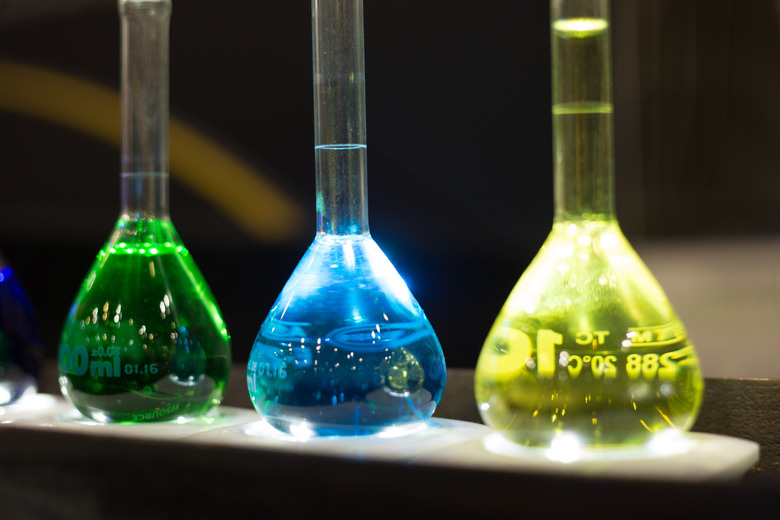How To Calculate The Percent Transmittance
Sir Isaac Newton published his first paper on optics in 1672, and since then, his work on understanding color became the foundation of scientific studies of light. This lead to greater understanding of the composition of stars, the atmospheres of different planets and the chemical compositions of various solutions. One quality of light, transmittence, influences the effects different materials have on your life.
Understanding Transmittance
Understanding Transmittance
Light travels through different substances with varying degrees of success. Transparent materials let light travel through. Translucent materials let some light travel through, but you don't get much of a view of what's on the other side. Opaque materials stop the passage of light. Transmittance measures the amount of light that passes through a material and is usually reported as a percent comparing the light energy transmitted through a material to the light energy that entered the material. A perfectly transparent material transmits 100 percent of light while a completely opaque material transmits 0 percent of light. A material does not have to be colorless to transmit light.
Uses of Transmittance
Uses of Transmittance
Transmittance of light provides information in many applications. Testing window tint films, window tints and glass clarity seem obvious. Other uses of transmittance measurements include measuring concentrations of chemicals in solutions, grades of maple syrup, atmospheric haze and water clarity.
Measuring Transmittance
Measuring Transmittance
Instruments used to measure transmittance are spectrophotometers and light transmittance meters. These instruments pass a known amount of light through a clear substance and then measure the amount of light transmitted through the substance. The light source may include the full spectrum of light or may be limited to a narrow band of wavelengths. For general purposes, full-spectrum light sources are recommended.
Calculating Transmittance
Calculating Transmittance
The formula for calculating transmittance (T) is transmittance equals light exiting the sample (I) divided by light striking the sample (I0). Mathematically, the formula is:
\(T=\frac{I}{I_0}\)
Transmittance usually is reported as percent transmittance, so the ratio is multiplied by 100, as:
\(\%T=\frac{I}{I_0}\times 100\)
In order to use the formula, you need to know the amount of light entering the fluid (I0) and the amount of light that passes through the fluid (I).
To solve for transmittance, enter the values for the light energy entering the sample and the light energy exiting the sample. For example, suppose the radiant energy entering the sample is 100 and the energy leaving is 48. The transmittance formula becomes:
\(T=\frac{48}{100}=0.48\)
Transmittance usually is reported as a percent of the light passing through the sample. To calculate percent transmittance, multiply the transmittance by 100. In this example, percent transmittance therefore will be written as:
\(\%T = 0.48 \times 100 = 48\%\)
The percent transmittance for the example equals 48 percent. If the sample were maple syrup, for example, this syrup's classification would be U.S. Grade A Dark.
Cite This Article
MLA
Blaettler, Karen G. "How To Calculate The Percent Transmittance" sciencing.com, https://www.sciencing.com/calculate-percent-transmittance-7599639/. 14 December 2020.
APA
Blaettler, Karen G. (2020, December 14). How To Calculate The Percent Transmittance. sciencing.com. Retrieved from https://www.sciencing.com/calculate-percent-transmittance-7599639/
Chicago
Blaettler, Karen G. How To Calculate The Percent Transmittance last modified August 30, 2022. https://www.sciencing.com/calculate-percent-transmittance-7599639/
